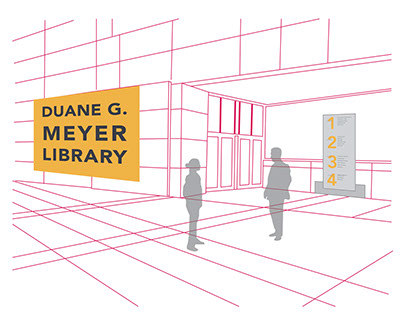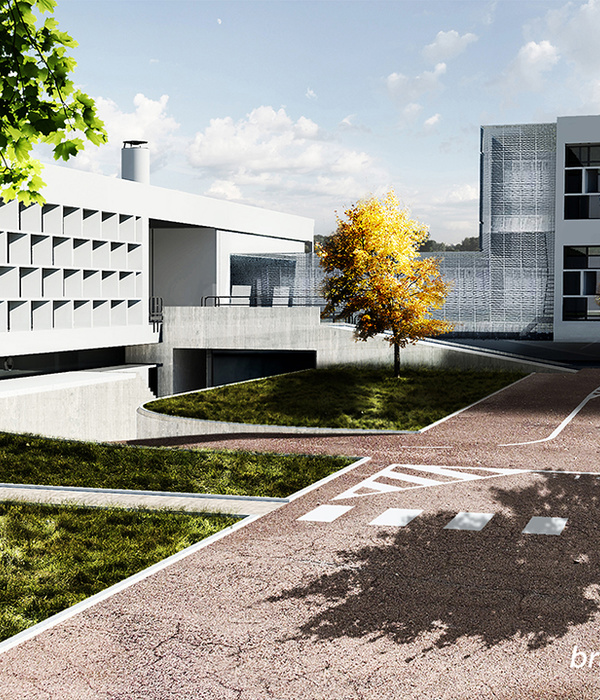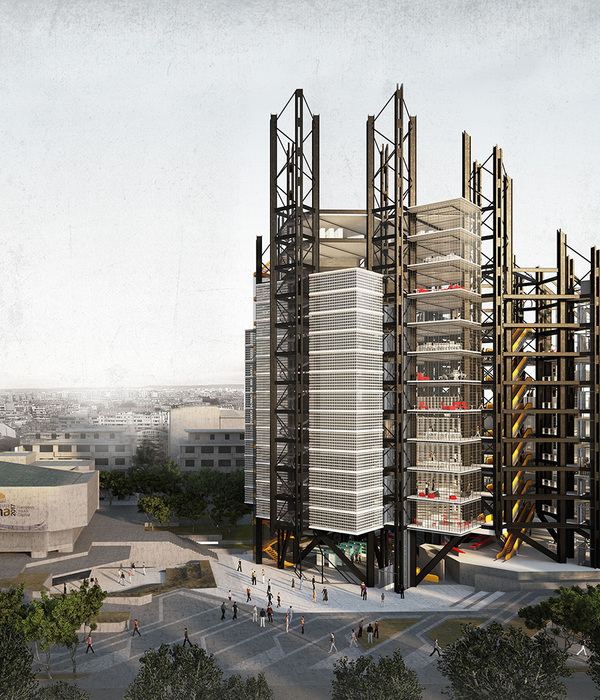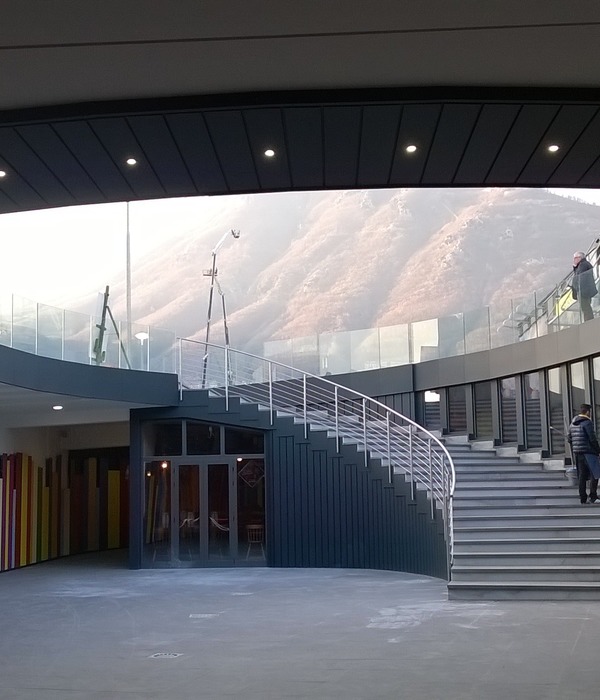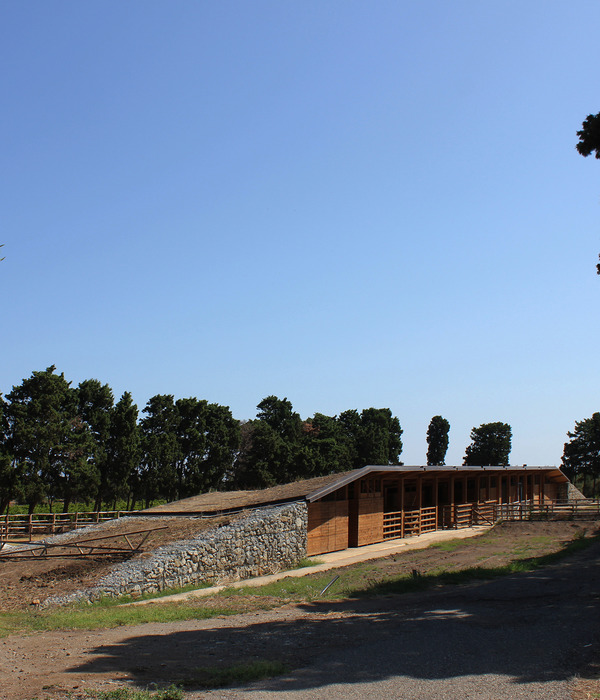背景 | CONTEXT
Bayssan剧院的历史悠久而充满谜团,但从其名称可以推测出它与高卢人扩张时期有着一定的联系——该时期对于Béziers城市的塑造和经济发展有着重要的意义。
今天的Bayssan剧院是一个文化自由的场所,并拥有不可取代的地位。从前的“Sortie Ouest”剧院承载着崇高的使命,旨在呈现比普通的娱乐和艺术表演更加广泛和丰富的内容。除了满足部分小众群体的活动需求以外,剧院还以“通识教育”为方向,鼓励多种艺术形式和情感表达方式的碰撞。
▼项目概览,general view©SOPHIE ODDO
The deep-rooted origins of the Domaine de Bayssan still remain a mystery, but its toponymy plunges us into the Gallo-Roman period which contributed strongly to the city of Béziers identity, its economic expansion and emergence in the history.
Today, it is a place of cultural freedom that holds its own on the cultural scene. The former «Sortie Ouest» theatre already had a noble vocation, much broader and more generous than the performing arts as simple entertainment. Sortie Ouest imposed a demanding and diversified programme, not only to satisfy the small circle of an informed public but also orientated towards «general education». It seeks to provide opportunity for sometimes unexpected artistic encounters, the inexhaustible source of rich and contrasting emotions.
▼场地平面图,site plan©K ARCHITECTURES
设计目的 | OBJECTIVES
剧院希望在实际的空间和形式上均保留其曾经作为马戏团的内核与文化使命,因此,该项目在很大程度上参考了马戏团帐篷的设计风格。
正如马戏团的驻扎营地一般,Bayssan剧院也可以根据文化项目和活动的需要随时进行移动和重新配置。大篷车、舞台和宴会厅等各类设施均可以被合理地设置在城市的公共空间或配套空间内。为了实现这种使用上的巨大自由度,除了接待设施所需的技术设备外,剧场没有采用任何永久性的结构。
The theatre wanted to preserve its circus soul which corresponds to its cultural vocation, both in substance and in form. Consequently, the project largely draws its references from circus architecture.
Just as a circus encampment, the Domaine de Bayssan is in perpetual movement and reconfigured according to the cultural programme and events. Caravans, stages, banquets, barnums and all the other event facilities find their place, in both the public space as well as the support facilities. To respond to this great freedom in use, the landscape provides large esplanades devoid of permanent buildings, with the exception of the technical plant for the reception facilities.
▼项目参考了马戏团帐篷的设计风格©SOPHIE ODDO
The project largely draws its references from circus architecture
设计详述| DESIGN INTENT
呼应旧时Sortie Ouest剧院的三个帐篷结构,该项目也被分为三个独立的建筑体量。其中最小的一个“帐篷”容纳了接待设施,它同时服务于礼堂和圆形剧场,可供观众们在中场休息时稍作放松。“大帐篷”是礼堂空间,用于排练和表演;体积最大的“圆形露天剧场”则进一步完善了剧院的配置。
Reminiscent of the three canvas tents of the Théâtre Sortie Ouest, the project is divided into three separate architectural entities. The “small tent” houses reception facilities, a space shared by the auditorium and amphitheatre, that nourish and relieve us before and after, during interval. A backdrop to the auditorium, the “big tent” is the space for rehearsals and performance. The very “large open-air arena” or amphitheatre completes the configuration.
▼三个独立的“帐篷”,three separate “tents” © MARC DUNILE
"小帐篷"容纳了接待设施,The "small tent" houses reception facilities©SOPHIE ODDO
▼“小帐篷”内部空间,The “small tent” interior view©SOPHIE ODDO
礼堂和餐厅所在的建筑是基于一个模块化的建造系统而开发的,其外壳的造型参考了传统马戏团帐篷上以中央桅杆为中心向四周放射的花冠图案,强调出帆布的缝合方式。
Borrowing from the archetypal form of the first «fixed» sedentary circuses, the auditorium and the lobby restaurant architecture are developed from a modular construction system. The moulding of the envelope is an architectural reinterpretation of the motifs that adorn circus tents. It adopts the radiant corolla pattern around the central mast which emphasises the canvas stitching.
▼“大帐篷”立面,the “big tent” facade© MARC DUNILE
▼大小帐篷立面细节,exterior detailed view©SOPHIE ODDO
▼“大帐篷”内部,interior view of the “big tent”©SOPHIE ODDO
"大帐篷"是礼堂空间,用于排练和表演©SOPHIE ODDO
The "big tent" is the space for rehearsals and performance
圆形露天剧场采用了不同于古希腊式剧场的做法:其阶梯式的座位并非基于人工开凿的堤坝而修建,而是通过使用未经加工的材料与其固有的景观环境融为一体。
Due to the bulk generated by its context and function, the open-air amphitheatre is unique in terms of its architecture. Unlike the amphitheatres of ancient Greece, its tiered seating is not inclined against a natural embankment, blending into the topography of the landscape to adopt its raw material.
露天剧场,the open-air amphitheatre©SOPHIE ODDO
露天剧场的顶篷也和马戏团帐篷有些不一样:位于座位上方的帆布遮阳蓬在晴天时可以拆除,只有舞台上方的褶皱顶篷一直处于固定状态,为后台区域蒙上了一层神秘的“面纱”。
It also expresses a circus style architecture, a somewhat strange tent whose canvas awning over the seating can be removed on sunny days. Only the stage remains under the pleated canvas cover, an opaque and dark veil over the mysteries backstage.
▼露天剧场舞台,the stage of the amphitheatre © SOPHIE ODDO
露天剧场座位和入口楼梯,seating area and entry staircase©SOPHIE ODDO
▼远观建筑,view from the distant©SOPHIE ODDO
▼户外广场夜景,outdoor plaza night view©SOPHIE ODDO
▼建筑夜景,night view©SOPHIE ODDO
▼大小帐篷平面和立面图,plan and section – the “small tent” and “big tent”©K ARCHITECTURES
圆形露天剧场平面和剖面图,plan and section – the open-air amphitheatre©K ARCHITECTURES
CLIENT
DÉPARTEMENT DE L’HÉRAULT
DESIGN TEAM
K ARCHITECTURES SIGWALT HERMAN (Thomas Ehrhardt project architect) whis, CHANGEMENT A VUE (scenography) ATELIER VOLGA (landscape architect) BATISERF (structural engineers) BET CHOULET (services engineer) BMF (building economist) ALTIA (acoustical consultant) ATEVE (civil engineer) AIA MAMANGEMENT (construction manager)PROJECT
«big tent» modulable theatre 423/925 seat 1.440 standing places «little tent» 235 seat cabaret restaurant and bookshop
1440 spectator amphitheatre (including 965 seats)BUDGET 20M € incl.
USEFUL SURFACES 4,500m2
THEATER and RESTAURANT 2,300 m2
Stage set: 15 x 22m + 65m2 proscenium
Height = 8.50 m under grill
423-seat retractable bleacher
AMPHITHEATRE 2 200 m2
Stage space: 340 m2, Stage set: 12 x 20m including an 80m2 mobile proscenium + a mobile proscenium of 80m2 – Height = 9.00 m under mobile false grill – Orchestra pit for 30 to 60 musicians
IMPLEMENTATION
400m3 of wood, 2 550m2 of wood interior cladding panels
{{item.text_origin}}

